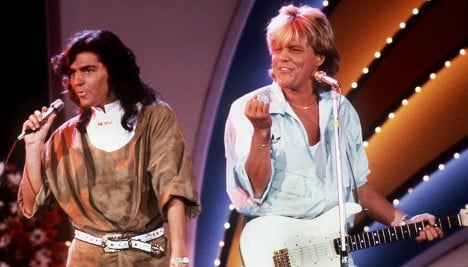When I was 17, my mother started hassling me daily to let her cut my hair. Even though by that time she was an executive of a hair-colour company, she swore she had never forgotten her roots working long hours in salons.
I deflected her requests – I’d let her pay for my clothes but she didn’t get to pick them out and the same was true for my hairstyle. After all, at 17, the last thing you want is to look the way your mother wants you to.
I also had a secret reason why I wanted to keep my hair the way it was – it had originally been cut by a German (at the time I thought this was synonymous with “European”) and it was the same style as all the Dutch cyclists I worshipped back then. Maybe you can guess just what kind of hairdo I had: It was the late ’80s and most pro cyclists favoured the same style as pro soccer players. That’s right, I had a mullet.
But it was very stylish, I assure you. It wasn’t of the Rudi Völler mullet variety.
At the time, I also didn’t know Germans had named the hairstyle using their penchant for acronyms. In Germany, a mullet is known as a VoKuHiLa for: Vorne Kurz, Hinten Lang (short up front and long in the back). It’s the same way they arrived at the candy treat Hanuta: HaselNussTafel. Or Adidas, short for the name of its founder Adi Dassler.
I eventually acquiesced to my mother’s pleading and let her give me a crappy haircut. After an hour of bickering, she swore she would never, ever cut the hair of such an ungrateful son again. A bad haircut is an expensive price to pay to get your mother off your back, but it also cinched my obsession with German hair.
My father once visited Germany during some election and Kurt Beck of the Social Democrats was constantly on the TV as the head of his party. It bothered me that this roly-poly, hairy dude was the face of German politicians – there are normal people here, I assured my father, not like America’s über-slick political class.
But when Beck’s visage pops up on television I think one thing: hedgehog. And it’s not just me. Officially, the hairstyle that man – the state premier of Rhineland-Palatinate – wears is called the hedgehog, or the Igel. Trust me, Google it.
To me, if one of your most important elected officials walks into the salon and says: “Give me the Igel,” he’s doing something wrong. He just wants a haircut, not a spiky hirsute mammal. No, the Igel hasn’t landed – ON YOUR HEAD.
And he’s not the only politician doing it. It’s popular with Petra Pau over at the post-commie party The Left too. It’ s a unisex Teutonic hairdo, I guess. Maybe everyone should get the hedgehog – plenty of my German in-laws certainly have it.
There’s only one style that would be worse on a politician, and even the tabloid Bild would pick up on it: the Porno Palme. That’s right: the Porno Palm. What is it, you ask? It’s that little tree of (usually) bleach blonde hair formed when a woman creates a pony tail on the top of her head rather than the back. It’s usually accompanied by an Arschgeweih (literally “ass antlers” and we call a “tramp stamp” in English) and is de rigeur at Tussi Toasters – bimbo toasters aka tanning salons.
Speaking of ponytails, I’m always bothered when Germans talk about their ponys, not just because they’re misusing English but because I immediately think of a ponytail. But what they actually mean is their bangs (or fringe for you Brits). A ponytail is a “horsetail” (pferdeschwanz) in Germany.
However, my favourite word for a German haircut is the Irokesenschnitt, the Iroquois cut otherwise known as a Mohawk. Wikipedia tells me the Iroquois were the parent tribe of the Mohawk Indians, so both are apparently proper hairdo nomenclature.
It turns out, haircuts go even deeper into German culture. Back during the War, a simple women’s hairdo was known as the Entwarnungsfrisur, or “all-clear cut” since it was the perfect thing for spending nights in a bomb shelter.
There is also of course the Glatze – how Germans refer to a shaved head – which can be either bad or totally modern depending on the accompanying wardrobe. Though the right-wing extremist look might not be what you think – as I once learned during a night out in Berlin’s gay district. Remember: A tough-looking skinhead may just be very, very gay.
Don’t even get me started on meaning of the German Schnauzer moustache, but be forewarned – it’s coming back.
These days my frisur is difficult to define as it’s shaped by my duties as a father of two, a full-time correspondent, a part-time comedian and lack of a niggling mother. I believe the Germans would call it the Fatwofuticopaticonimo.
Since a good German Stammtisch is a place where pub regulars come to talk over the issues of the day, Portnoy welcomes a lively conversation in the comments area below.




 Please whitelist us to continue reading.
Please whitelist us to continue reading.
Member comments